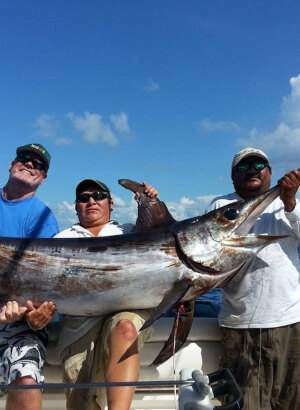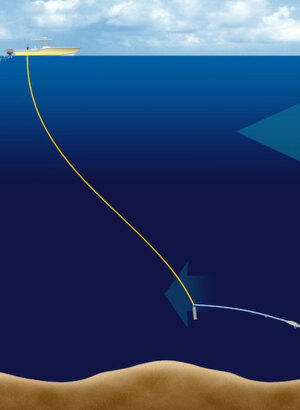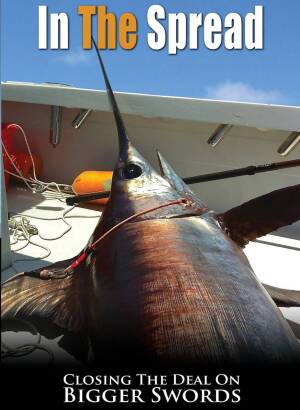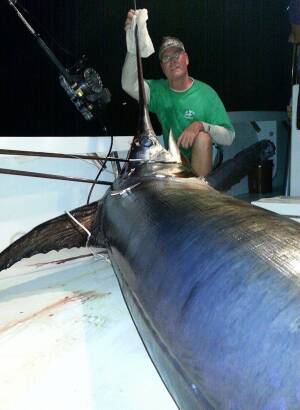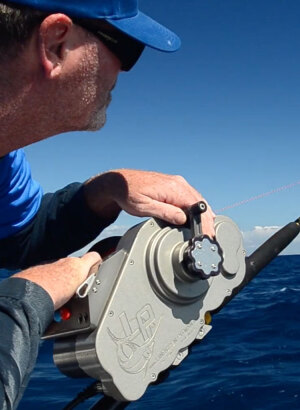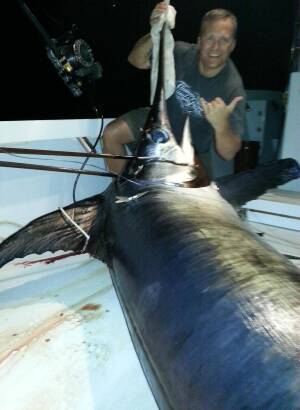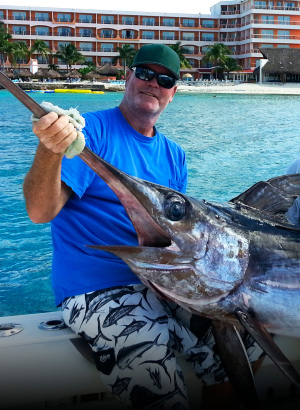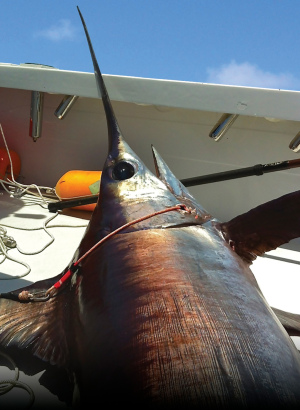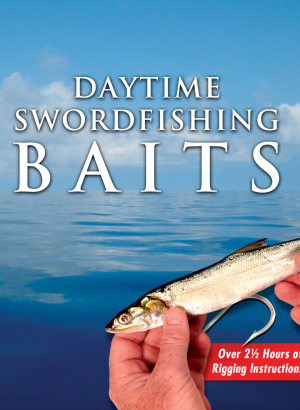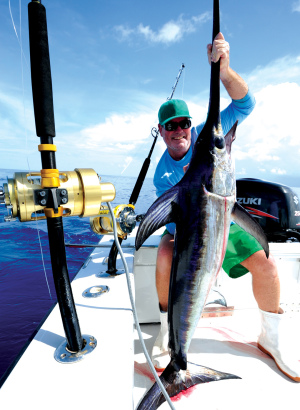Swordfish migrate thousands of miles between temperate and tropical waters. Following seasonal temperature and prey movements, North Atlantic populations swim along the eastern North American and European coasts. These powerful predators also undergo pronouncd daily vertical migrations and possess specialized adaptations enabling their epic ocean-spanning journeys.
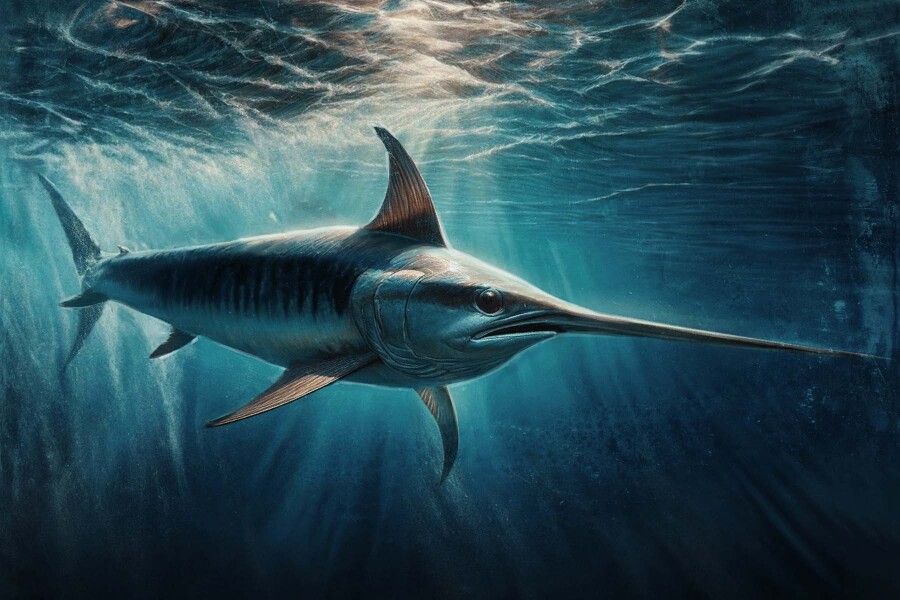
Swordfish Migration - The Long Journey of an Apex Predator
Swordfish (Xiphias gladius) are highly migratory fish that undertake remarkable journeys across entire ocean basins. These large, powerful predators migrate thousands of miles between their spawning and feeding grounds in response to changes in water temperature, prey availability, and other environmental cues. Understanding the complex migration patterns of swordfish poses challenges but provides insights into their behavior and ecology that can inform conservation efforts.
Key Facts About Swordfish Migration
- Swordfish annually migrate long distances, up to thousands of miles, between their summer feeding grounds in temperate or cold waters and winter spawning areas in warmer tropical waters.
- In the North Atlantic, swordfish migrations generally follow a north-south seasonal pattern along the eastern coasts of North America and Europe.
- Swordfish are found worldwide in tropical, temperate, and sometimes cold waters of the Atlantic, Indian, and Pacific Oceans.
- Swordfish navigate during their oceanic migrations using cues such as earth's magnetic field, temperature gradients, and ocean currents. They exhibit a consistent migratory pattern year after year.
- Swordfish migrate vertically on a daily basis, descending to deeper, cooler waters during the daytime and rising to shallow, warmer waters at night. This diel migration is likely related to thermoregulation, feeding, and predator avoidance.
- Advances in tracking technology like pop-up satellite archival tags have improved understanding of swordfish migratory behaviors and habitat use. However, studying their migration still poses many challenges.
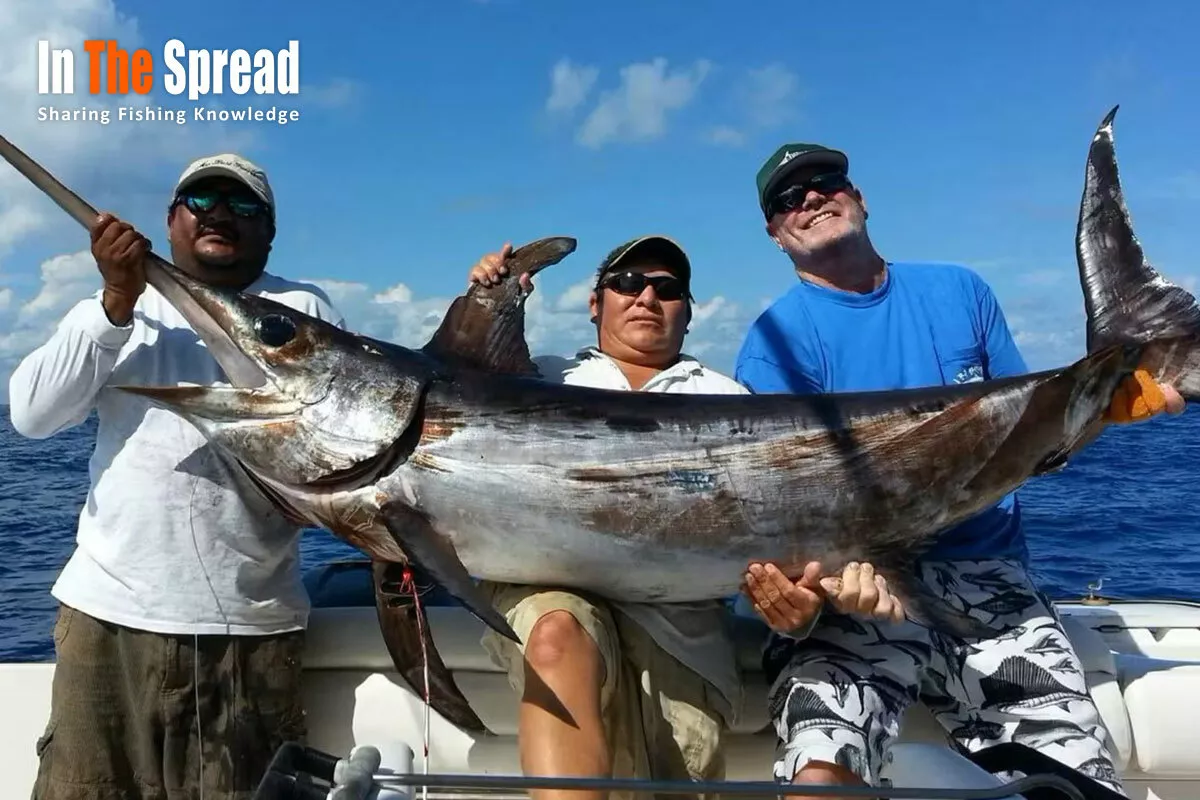
Understanding Migration Patterns
Spawning Migrations
Swordfish are renowned for their impressive migratory behavior, traversing vast distances between their feeding grounds and spawning areas. These magnificent fish are known to travel thousands of kilometers across the ocean to reach their desired destinations. The primary driving force behind their migrations is the need to find suitable conditions for reproduction and to access abundant food sources.
Swords are highly selective when it comes to their spawning grounds, requiring specific environmental conditions to ensure the survival of their offspring. They prefer tropical and subtropical waters where the sea surface temperature is at least 22°C (72°F). In the western North Atlantic, the most significant spawning grounds are situated south of the Sargasso Sea and in the Caribbean Sea. These regions provide the optimal temperature range and currents necessary for the development of swordfish eggs and larvae.
Interestingly, the timing of spawning varies depending on the location. In some tropical regions, swordfish spawn year-round, taking advantage of the consistently warm waters. However, in many other areas, peak spawning activity occurs during the spring and summer months when water temperatures are at their highest. During a single spawning event, an adult female swordfish can release an astounding 2-3 million buoyant eggs, maximizing the chances of successful fertilization and survival of the offspring.
Once the eggs hatch, the swordfish larvae embark on a fascinating journey. They drift along with the ocean currents for an extended period, typically lasting 1-2 years. During this time, the larvae undergo a series of developmental stages, gradually transforming into juvenile swordfish. This prolonged drifting phase allows the young swordfish to disperse over a wide area and take advantage of the available food sources in different regions of the ocean.
After the spawning season, adult swordfish undertake remarkable migrations to reach productive feeding areas. These migrations can span thousands of kilometers, showcasing the incredible navigational abilities of these fish. Satellite tagging studies have provided valuable insights into the migratory patterns of swordfish, revealing repeated annual migrations between temperate feeding zones and tropical spawning grounds.
The factors that trigger swordfish to embark on these long-distance migrations are not entirely understood, but scientists believe that a combination of environmental cues and internal biological processes play a crucial role. Changes in water temperature, prey availability, and the maturation status of the fish are thought to be key factors influencing their migratory behavior.
As swordfish move between different regions of the ocean, they adapt to the varying temperature regimes and food sources available in each area. Their ability to undertake such extensive migrations allows them to maximize their chances of finding suitable conditions for growth, reproduction, and survival.
The migratory nature of swordfish has significant implications for their management and conservation. Understanding their movement patterns and the factors that influence their migrations is crucial for developing effective management strategies and ensuring the sustainability of swordfish populations worldwide. Through ongoing research and international collaboration, scientists and policymakers aim to protect these magnificent creatures and the oceanic ecosystems they inhabit.
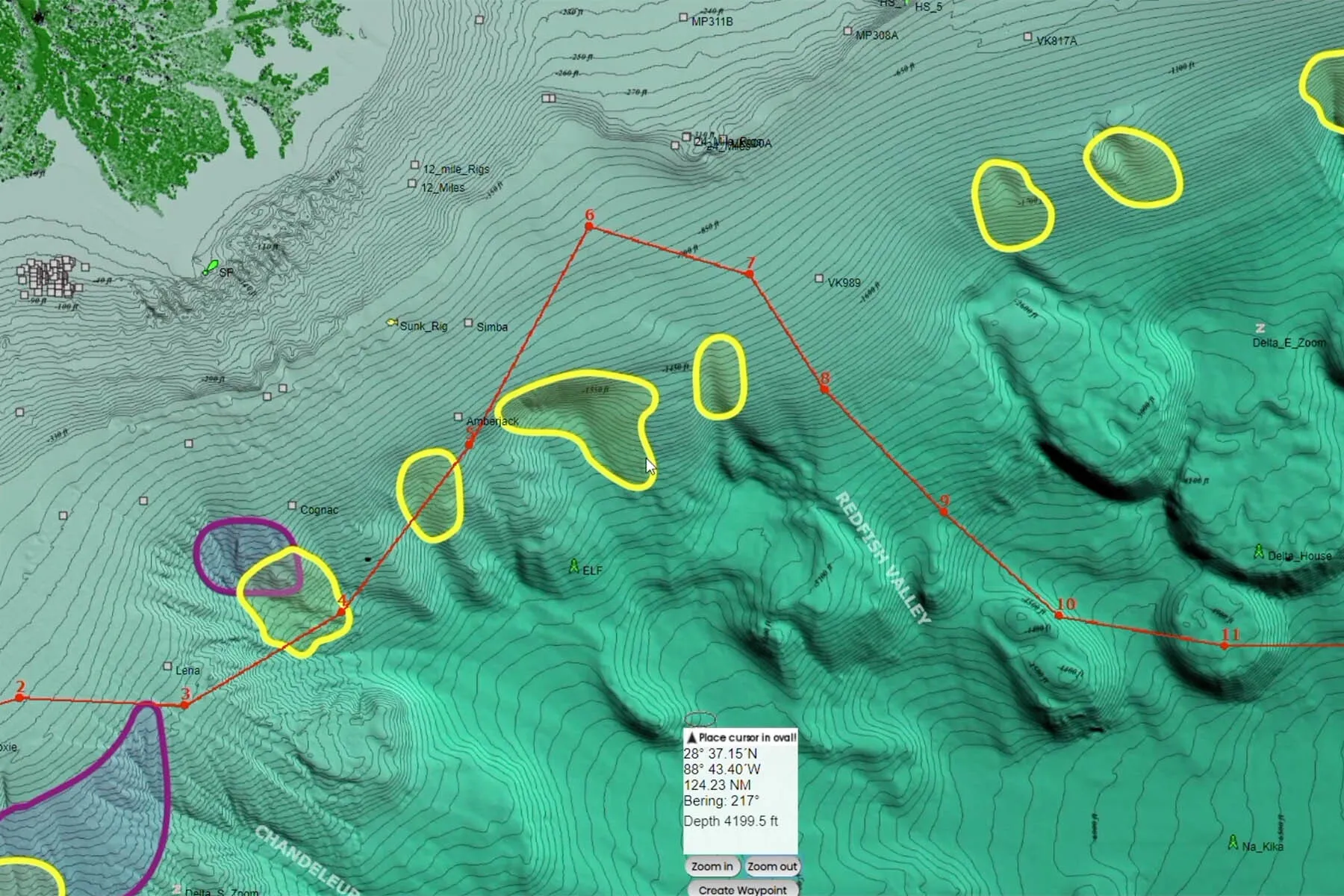
Seasonal Feeding Migrations
The migration cycle of North Atlantic swordfish along the eastern coast of North America is a fascinating example of the remarkable journeys undertaken by these magnificent fish. This well-studied migration pattern showcases the swordfish's ability to adapt to different environments and take advantage of varying food sources throughout the year.
During the winter and spring months, North Atlantic swordfish congregate in the warm, tropical waters of the Caribbean region. This area serves as their primary spawning ground, providing the ideal conditions for reproduction. The warm water temperatures and abundant prey sources in the Caribbean create a favorable environment for the development of swordfish eggs and larvae.
As the summer approaches, a significant change occurs in the migratory behavior of these swordfish, particularly among the large females. In early summer, they begin their northward journey along the coast, driven by the need to find more productive feeding grounds. By late June, these swordfish have traversed a considerable distance, reaching the rich waters off the northeast United States, including areas such as Georges Bank, the Grand Banks, and the Gulf of Maine.
These regions are renowned for their high productivity and abundant prey species. The cool, nutrient-rich waters support a thriving ecosystem, attracting a diverse array of marine life. From July through the fall, North Atlantic swordfish take full advantage of this bountiful food supply. They voraciously feed on a variety of prey, including Atlantic mackerel, herring, squid, and silver hake. These prey species are abundant in the temperate shelf areas, providing the swordfish with the energy they need to sustain their long-distance migrations and prepare for the upcoming spawning season.
The peak feeding period for North Atlantic swordfish occurs in October, just before they embark on their southward migration back to the Caribbean waters. During this time, the swordfish focus on fattening up, storing energy reserves that will be crucial for their long journey and the subsequent spawning activities. The cooler water temperatures in the northern feeding grounds also help the swordfish maintain their body temperature, optimizing their metabolic processes and enabling them to efficiently hunt and consume large quantities of prey.
Interestingly, a similar migratory pattern can be observed in the South Atlantic swordfish population. During the Brazilian summer, when the equatorial waters become extremely warm, adult swordfish seek refuge in cooler, more productive waters at higher latitudes. Large females undertake migrations that can extend up to 45°S along the coasts of Uruguay, Argentina, and Brazil. These southern feeding grounds provide an escape from the intense heat and offer abundant prey resources.
The South Atlantic swordfish remain in these feeding areas until the austral autumn when the water temperatures begin to cool. As the season changes, the swordfish initiate their return migration to the equatorial regions, where they will engage in spawning activities once again. This cyclical migration pattern allows the swordfish to take advantage of the most favorable conditions for reproduction and feeding throughout the year.
Understanding the migration cycles of swordfish in different regions is crucial for their conservation and management. By studying the factors that influence their movements, such as water temperature, prey availability, and spawning requirements, scientists can develop informed strategies to protect these magnificent creatures and ensure the sustainability of their populations. This knowledge also helps in predicting the potential impacts of climate change on swordfish migration patterns and the implications for the ecosystems they inhabit.
Factors Influencing Migratory Patterns
The seasonal migration patterns of swordfish are influenced by a complex interplay of biological and environmental factors. Temperature serves as a primary driver of their migratory behavior. Swordfish are highly sensitive to thermal gradients and actively seek out water temperatures that are optimal for their physiological needs. They move along these thermal gradients to locate suitable spawning and feeding habitats. Warmer waters are preferred for spawning, as they provide the ideal conditions for egg and larval development. In contrast, cooler, more temperate waters are sought out during feeding migrations, as they tend to have higher productivity and prey abundance.
Prey availability is another crucial factor influencing swordfish migration patterns. These predatory fish are opportunistic feeders and follow the movements of their prey species. They migrate to areas where prey densities are high, ensuring a reliable food source to support their energy requirements. Swordfish are known to target a variety of prey, including squid, small pelagic fish, and crustaceans. The distribution and abundance of these prey species can vary seasonally and geographically, shaping the migratory routes of swordfish.
Environmental cues such as day length, ocean currents, and specific oceanographic features also play a significant role in guiding swordfish migrations. Swordfish are believed to orient themselves using geomagnetic fields, allowing them to navigate across vast expanses of the ocean. They may also follow distinct bathymetric features, such as shelf breaks and underwater canyons, which can serve as migration highways. Frontal zones, where water masses with different characteristics meet, often attract swordfish due to the concentration of prey species along these boundaries.
In addition to these environmental factors, swordfish migrations can be influenced by population density and intraspecific competition. When swordfish populations are high in a particular area, individuals may disperse to other regions to reduce competition for resources. This can lead to the exploration of new habitats and the establishment of alternative migratory routes.
Furthermore, anthropogenic pressures, such as fishing activities and marine pollution, can modify the migratory movements of swordfish. Intensive fishing pressure in certain areas may cause swordfish to alter their routes to avoid capture, while pollution and habitat degradation can render some regions less suitable for spawning or feeding.
Understanding the complex interplay of these biological and environmental factors is essential for the effective management and conservation of swordfish populations. By considering the influence of temperature, prey availability, oceanographic features, and human activities, researchers can develop more accurate models to predict swordfish movements and identify critical habitats. This knowledge can inform the establishment of protected areas, the implementation of sustainable fishing practices, and the development of international agreements to safeguard these highly migratory species.
Daily Vertical Migration
Swordfish exhibit remarkable vertical migration patterns in addition to their extensive horizontal seasonal movements. These vertical migrations are characterized by a distinct diel or daily cycle, with swordfish occupying different depths in the water column during daylight hours compared to nighttime.
During the day, swordfish typically descend to deeper, colder waters, often below the thermocline. The thermocline is a distinct layer in the ocean where the water temperature changes rapidly with depth. Swordfish are known to reach depths greater than 600 meters during their daytime dives, entering the mesopelagic zone. This zone, extending from about 200 to 1,000 meters deep, represents an important habitat for swordfish during the day.
At night, swordfish undergo a significant vertical ascent, moving into the warmer, epipelagic waters less than 100 meters deep. This nocturnal migration brings them closer to the surface, where they can feed on prey species that inhabit the upper layers of the water column.
Several factors are believed to drive this diel vertical migration pattern in swordfish. Thermoregulation is one of the primary reasons. By descending to colder depths during the day, swordfish can regulate their body temperature and avoid overheating in the warmer surface waters. Additionally, the vertical migration may be related to feeding behavior. Swordfish likely follow the movements of their prey species, which also undergo vertical migrations. During the day, they target deepwater prey in the mesopelagic zone, while at night, they feed on prey in the shallow, epipelagic waters.
Predator avoidance may also play a role in the vertical migration of swordfish. By spending daylight hours in deeper, darker waters, they can reduce their visibility to potential predators. The ascent to shallower depths at night may coincide with the decreased activity of certain predators, providing a safer environment for swordfish to feed.
To undertake these extensive vertical movements, swordfish have evolved remarkable physiological adaptations. They possess specialized brain and eye heating organs that help maintain optimal functioning in the colder depths. Additionally, swordfish have high concentrations of hemoglobin in their blood, enhancing their oxygen-carrying capacity and enabling them to efficiently navigate the varying oxygen levels encountered during their vertical migrations.
Despite these adaptations, the extreme temperature changes experienced by swordfish during their migrations pose significant physiological challenges. Moving between the warm surface waters and the cold mesopelagic zone can expose them to temperature differences of over 20°C. This thermal gradient requires efficient thermoregulatory mechanisms and metabolic adjustments to maintain homeostasis and minimize the energetic costs of vertical migration.
Understanding the vertical migration patterns of swordfish is crucial for assessing their habitat preferences, predator-prey dynamics, and overall ecosystem interactions. This knowledge can inform management strategies, such as the establishment of depth-specific fishing regulations and the identification of critical habitat areas for conservation efforts. By considering both the horizontal and vertical movements of swordfish, researchers can gain a more comprehensive understanding of their biology and the factors influencing their distribution in the ocean.
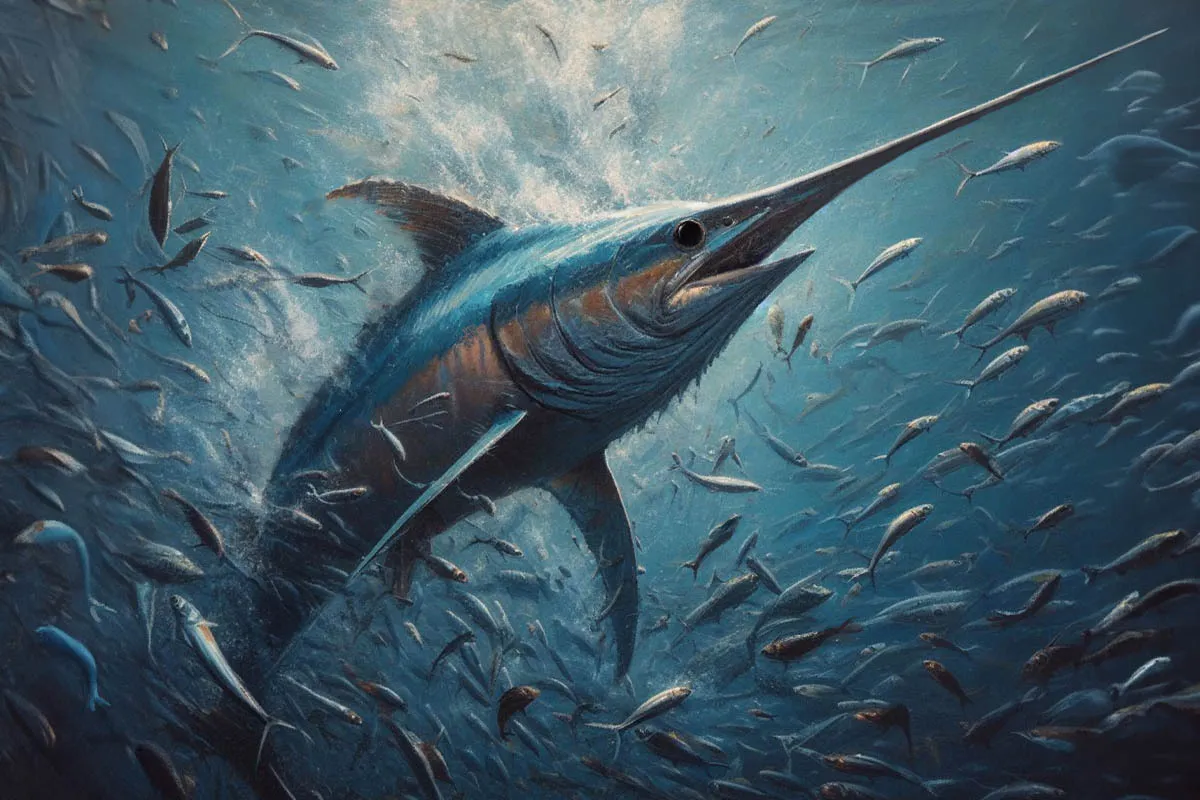
Tracking Methods and Technologies
- Tagging Studies: Pop-up satellite archival tags (PSATs) and conventional tags attached to captured fish allow tracking of horizontal and vertical movements when tags are recovered. Scientists can reconstruct migration pathways and environmental preferences.
- Satellite Telemetry: Analyzing data from PSATs via satellite relay provides insights into environmental preferences and habitat utilization throughout a swordfish’s migration route.
- Stable Isotope Analysis: Chemical analysis of tissue samples can reveal distinct isotope signatures in different geographic regions, allowing scientists to reconstruct migration patterns.
- Genetic Analyses: Population structure and genetic connectivity between swordfish stocks can indicate patterns of migration and mixing between regions. Acoustic Monitoring: Listening arrays like the Ocean Tracking Network can detect tagged swordfish and monitor ocean basin-scale movements.
Conservation and Management
The Remarkable Migrations of Swordfish
Swordfish are indeed remarkable oceanic voyagers, undertaking some of the most awe-inspiring migrations in the natural world. These magnificent fish are true champions of the sea, capable of traversing vast expanses of the ocean and navigating through challenging underwater landscapes during their year-round journeys between feeding and spawning grounds.
The migratory feats of swordfish are nothing short of heroic. They possess an extraordinary ability to swim long distances, covering entire ocean basins in their pursuit of optimal habitats. Swordfish are known to cross hazardous undersea terrain, including deep trenches, seamounts, and submarine canyons, demonstrating their exceptional navigational skills and adaptability.
Scientists have been fascinated by the incredible abilities of swordfish that enable them to complete their extensive migratory circuits. These fish are equipped with powerful muscular bodies and streamlined physiques, allowing them to swim at impressive speeds and maintain their pace over prolonged periods. Their strong, crescent-shaped tail fin provides the thrust necessary for efficient long-distance swimming.
Navigational prowess is another key factor in the success of swordfish migrations. They possess a keen sense of direction and are believed to use a combination of environmental cues, such as ocean currents, water temperature gradients, and geomagnetic fields, to orient themselves and chart their course across the vast ocean expanses. This innate navigational ability enables them to locate favorable feeding grounds and return to specific spawning areas year after year.
Moreover, swordfish have evolved remarkable physiological adaptations that allow them to thrive in a wide range of ocean habitats. They are capable of tolerating extreme temperature changes as they move between the sun-drenched surface waters and the dark, cold depths of the bathypelagic zone, which extends beyond 1,000 meters deep. Swordfish possess specialized heating organs near their eyes and brain, helping them maintain optimal visual acuity and neural function in the chilling depths. Additionally, their high concentrations of hemoglobin in their blood enhance oxygen transport, enabling them to efficiently navigate the varying oxygen levels encountered during their vertical migrations.
The migratory journeys of swordfish are not only a testament to their incredible physical capabilities but also a reflection of the complex interplay between their biological needs and the dynamic ocean environment. These migrations are driven by the search for abundant food sources, suitable spawning conditions, and favorable environmental factors. By undertaking such heroic journeys, swordfish ensure the survival and continuation of their species, playing a vital role in the balance and connectivity of marine ecosystems.
The study of swordfish migrations has captivated scientists and sparked a sense of wonder and admiration for these incredible creatures. Through the use of advanced tracking technologies, such as satellite tags and acoustic telemetry, researchers have been able to unravel the mysteries of swordfish movements and gain a deeper understanding of their life histories. These insights not only contribute to our scientific knowledge but also inform conservation efforts and management strategies aimed at protecting these magnificent oceanic travelers.
Swordfish truly embody the spirit of adventure and resilience in the marine world. Their heroic migrations serve as a reminder of the incredible diversity and adaptability of life in the oceans, and the importance of preserving these awe-inspiring journeys for generations to come.
Swimming Capabilities
Swordfish are renowned for their exceptional swimming abilities, which are made possible by their unique physical adaptations and specialized anatomy. Their large, streamlined bodies and distinctive lunate tail fins are key features that contribute to their remarkable speed and efficiency in the water.
Recent studies utilizing acoustic tracking technology have provided fascinating insights into the swimming capabilities of swordfish. By attaching small, lightweight tags that emit acoustic signals, researchers have been able to monitor the movements and speeds of these fish in their natural habitat. The data collected from these studies have revealed that swordfish are capable of maintaining impressive average speeds of over 50 miles per day during their long-distance migrations. This sustained pace allows them to cover vast expanses of the ocean efficiently, minimizing energy expenditure while maximizing their ability to reach desired feeding and spawning grounds.
In addition to their endurance, swordfish are also known for their explosive bursts of speed. When pursuing prey or evading predators, they can rapidly accelerate to speeds exceeding 60 miles per hour. This incredible acceleration is made possible by their muscular bodies and powerful tail fins, which generate strong propulsive forces. Swordfish often target swift and agile prey species, such as squid and small tuna, and their ability to match or surpass the speeds of their prey is crucial for successful hunting.
Several anatomical adaptations enable swordfish to achieve these remarkable swimming feats. They employ a thunniform mode of locomotion, which is characterized by the concentration of muscle power in the tail region. This specialized swimming style allows for efficient transfer of energy from the body to the tail fin, resulting in powerful and precise movements. Additionally, swordfish have a compact and lightweight skeleton, with reduced bone density compared to other fish species. This structural adaptation reduces overall body weight without compromising strength, enhancing their swimming efficiency and maneuverability.
Moreover, swordfish possess an expanded surface area of red muscle fibers, which are responsible for delivering sustained power during swimming. These slow-twitch muscle fibers are rich in myoglobin, an oxygen-binding protein that enhances oxygen storage and utilization. The increased surface area of these fibers allows swordfish to generate continuous, steady power output, enabling them to maintain high speeds for extended periods without fatigue.
The extraordinary swimming capabilities of swordfish play a crucial role in their ability to undertake long-distance seasonal migrations. By efficiently navigating through the vast expanse of the ocean, swordfish can locate optimal feeding grounds, where they can consume large quantities of prey to fuel their energy-demanding journeys. Their speed and agility also aid in predator avoidance, as they can quickly escape from potential threats.
Understanding the swimming abilities of swordfish not only highlights their incredible adaptations but also underscores the importance of preserving the ocean habitats through which they migrate. The long-distance movements of swordfish connect disparate marine ecosystems, facilitating nutrient transfer and maintaining ecological balance. Therefore, the conservation of swordfish populations and their migratory routes is crucial for the health and productivity of the ocean as a whole.
Sensory Adaptations
Swordfish possess remarkable sensory capabilities that enable them to navigate across vast expanses of the open ocean during their migrations. One of the key adaptations that aid in their long-distance travels is their sophisticated lateral line system. This sensory organ, which runs along the length of their body, consists of a series of fluid-filled canals and sensory hair cells. It allows swordfish to detect minute water movements and pressure gradients, providing crucial information about their surroundings. By sensing changes in water flow patterns, swordfish can gather cues about nearby obstacles, currents, and even the presence of other organisms. This heightened sensitivity to hydrodynamic stimuli likely plays a significant role in their navigational abilities, helping them orient themselves and chart their course through the featureless open ocean.
In addition to their lateral line system, swordfish have evolved specialized organs that provide them with thermal independence from the surrounding water temperature. These unique adaptations, known as heating organs, are located near their eyes and brain. By generating and conserving heat, these organs maintain a higher temperature compared to the ambient water, allowing swordfish to function optimally even in cold, deep waters. This thermal independence is particularly advantageous when swordfish follow their prey into the chilling depths of the mesopelagic zone, which can extend beyond 1,000 meters. The ability to maintain a stable temperature in their eyes and brain ensures that their visual acuity and neural processing remain unimpaired, enabling them to effectively hunt and navigate in these challenging environments.
Swordfish also possess highly developed visual systems that grant them excellent vision, even in the dim light conditions of the deep sea. Their eyes are large and well-adapted to detect low light levels, with specialized retinal structures that enhance light sensitivity. This visual acuity is further supported by the presence of a reflective layer behind the retina called the tapetum lucidum, which reflects light back through the retina, increasing the amount of light available for vision. These adaptations allow swordfish to locate and track their prey in the mesopelagic zone, where light penetration is minimal. The combination of their keen eyesight and thermal independence enables swordfish to be formidable predators, capable of pursuing and capturing their prey across a wide range of ocean depths.
The advanced sensory capabilities of swordfish, including their lateral line system, thermal independence, and strong visual acuity, are essential for their successful migrations and survival in the open ocean. These adaptations showcase the remarkable evolutionary processes that have shaped these magnificent creatures, enabling them to navigate through the vast, seemingly featureless expanses of the sea with incredible precision and efficiency. Understanding these sensory abilities not only deepens our appreciation for the complexities of swordfish biology but also highlights the importance of preserving the ocean habitats that support their incredible migratory journeys.
Evolutionary Influences
The remarkable migratory abilities of swordfish are the result of a complex interplay of evolutionary processes that have shaped these magnificent creatures over millions of years. Their adaptations, which enable them to undertake epic journeys across vast ocean expanses, have been honed through the relentless forces of natural selection.
One of the key drivers in the evolution of swordfish migration is competition between individuals. In the dynamic and resource-limited marine environment, individuals with superior migratory capabilities would have had a significant advantage in accessing prime feeding grounds and spawning sites. Those swordfish that could navigate more efficiently, swim faster, and cover greater distances would have been more successful in securing the resources necessary for survival and reproduction. Over time, these advantageous traits would have been favored and passed down to subsequent generations, leading to the gradual enhancement of migratory abilities within the population.
Another factor that likely influenced the evolution of swordfish migration is spawning site fidelity. Many swordfish populations exhibit a strong tendency to return to specific spawning grounds year after year. This behavior ensures that offspring are born in areas with suitable environmental conditions and abundant resources for their early development. The ability to navigate back to these precise locations across vast ocean distances requires a finely tuned set of sensory and navigational skills. Individuals with a greater capacity to locate and return to their natal spawning grounds would have had a higher reproductive success rate, leading to the propagation of genes associated with enhanced migratory abilities.
Genetic variations in migratory tendencies among individual swordfish have also played a role in shaping the evolution of their remarkable journeys. Within a population, some individuals may possess genetic predispositions that make them more inclined to undertake longer or more complex migrations. These variations could manifest in differences in sensory acuity, endurance, or navigational prowess. Over time, the individuals with genetic traits that conferred advantages during migration would have had a higher likelihood of surviving and reproducing, resulting in the gradual refinement and strengthening of migratory abilities within the population.
The evolutionary processes that have shaped swordfish migration have also led to the development of specialized sensory adaptations that enable them to navigate the open ocean with incredible precision. The sophisticated lateral line system, which allows swordfish to detect minute changes in water pressure and movement, likely evolved in response to the challenges of navigating vast, featureless expanses of the sea. Similarly, the presence of thermally independent organs in their eyes and brain, which grant them the ability to hunt in cold, deep waters, may have arisen as a result of selective pressures favoring individuals that could exploit a wider range of prey resources during their migrations.
The remarkable migratory abilities of swordfish stand as a testament to the power of evolutionary processes in shaping the incredible adaptations of marine life. Through millions of years of natural selection, competition, and genetic variation, these magnificent creatures have developed the sensory specializations and navigational skills necessary to complete their awe-inspiring journeys across the world's oceans. Understanding the evolutionary context of swordfish migration not only deepens our appreciation for their incredible abilities but also highlights the importance of preserving the ocean habitats that have shaped their evolution and continue to support their epic migrations.
Unanswered Questions
Despite significant advancements in our understanding of swordfish migration, there are still numerous unanswered questions that continue to intrigue scientists. While we have gained insights into their remarkable journeys, the precise mechanisms that guide their navigation across vast ocean expanses remain largely enigmatic. The sensory biology of swordfish, including the roles played by their lateral line system, visual acuity, and thermal adaptations, requires further investigation to fully comprehend how these specialized features enable them to undertake their epic migrations.
Another area of ongoing research is the population structure of swordfish. Scientists are working to unravel the complexities of swordfish populations, including their genetic diversity, connectivity between different regions, and the potential existence of distinct subpopulations. Understanding population dynamics is crucial for developing effective conservation and management strategies that ensure the long-term sustainability of swordfish populations worldwide.
The triggers that initiate and regulate swordfish migration also remain a subject of scientific inquiry. While factors such as water temperature, prey availability, and spawning cycles are known to influence their movements, the precise interplay of these variables and the cues that prompt swordfish to embark on their migrations are not yet fully understood. Unraveling these complex relationships requires further research and the integration of data from multiple disciplines, including oceanography, biology, and ecology.
To address these knowledge gaps, scientists are employing cutting-edge tracking technologies and launching international research initiatives focused on swordfish and other highly migratory marine species. Advanced satellite tags, acoustic telemetry, and remote sensing techniques are providing unprecedented insights into the movements, behaviors, and habitat preferences of these magnificent creatures. By collecting and analyzing vast amounts of data from tagged individuals, researchers are piecing together a more comprehensive picture of swordfish migration patterns and the factors that shape them.
Moreover, international collaborations and data sharing among scientists, fisheries managers, and conservation organizations are crucial for advancing our understanding of swordfish migration on a global scale. By pooling resources, expertise, and data, these initiatives aim to develop a more holistic view of swordfish populations and their interactions with the marine environment. Such collaborative efforts are essential for informing evidence-based management decisions and ensuring the effective conservation of these iconic species.
As we continue to unravel the mysteries surrounding swordfish migration, each new discovery brings us closer to a fuller appreciation of the incredible biological marvel that these creatures represent. The ongoing research and technological advancements in this field hold the promise of providing a clearer picture of the complex lives and journeys of swordfish, ultimately contributing to their long-term conservation and the health of the ocean ecosystems they inhabit.
Fishing for Swordfish
The predictable migratory patterns of swordfish have made them a significant target for commercial fisheries in both tropical and temperate waters around the globe. Longline and harpoon fishing techniques are commonly employed to capture swordfish, with fishermen relying on their knowledge of the species' migratory habits and habitat preferences to maximize their catch. Longline fisheries, in particular, take advantage of the swordfish's tendency to congregate along ocean fronts and underwater features during their migrations.
While the predictability of swordfish movements has facilitated their exploitation, it has also underscored the importance of understanding their migration patterns for the sustainable management of swordfish fisheries. Accurate knowledge of their migratory routes, spawning grounds, and feeding areas is crucial for implementing effective conservation measures and ensuring the long-term viability of swordfish populations.
However, the high commercial value and demand for swordfish have led to overfishing in some regions, resulting in declines in certain swordfish populations. This alarming trend highlights the urgent need for science-based management approaches to prevent further overexploitation. Fisheries managers and conservation organizations are working to establish catch limits based on the best available scientific data, taking into account factors such as population dynamics, reproductive biology, and migration patterns.
In addition to catch limits, gear restrictions and modifications are being implemented to reduce the impact of fishing on swordfish populations and their marine ecosystems. For example, the use of circle hooks in longline fisheries has been shown to minimize bycatch and improve the post-release survival of non-target species, including sharks and sea turtles. Similarly, time-area closures during peak migration periods or in critical spawning grounds can help protect vulnerable life stages and allow for population recovery.
Sustainable management of swordfish fisheries also requires international cooperation and coordination, as these highly migratory species traverse the waters of multiple countries and ocean basins. Regional fisheries management organizations (RFMOs) play a crucial role in facilitating collaborative efforts to assess swordfish stocks, set catch limits, and implement conservation measures across jurisdictional boundaries.
By combining scientific research on swordfish migration with responsible fisheries management practices, it is possible to strike a balance between the commercial exploitation of this valuable resource and the long-term conservation of swordfish populations. Continued monitoring, adaptive management, and the precautionary approach are essential to ensure that swordfish fisheries remain sustainable and that these magnificent ocean voyagers can continue to undertake their awe-inspiring migrations for generations to come.
Popular Baits
Swordfish are highly prized targets in recreational fisheries, attracting anglers from around the world who seek the thrill of battling these powerful and elusive game fish. To successfully hook into a swordfish, fishermen employ a variety of baits and techniques that cater to the species' feeding habits and migratory behavior.
One of the most popular baits for swordfish is whole tinker mackerel, which mimics their natural prey. Bonito belly strips, cut from the underside of bonito fish, are another effective bait due to their tough texture and appealing scent. Ballyhoo, a type of halfbeak fish, is also commonly used as it closely resembles the small fish that swordfish hunt. Other baits such as herring, squid, and eel are known to entice strikes from hungry swordfish.
Live or dead baits are particularly effective for targeting swordfish during daylight hours when they are typically less active. It is critical to rig baits so that they swim naturally and attract the attention of nearby swordfish. In either the daytime or night, anglers often attach water activated strobes just above their baits. These luminescent devices create a visual attractant that can draw swordfish from a distance and trigger explosive strikes.
To intercept swordfish across various depths, recreational fishermen employ a range of drifting and deep drop techniques. One strategy involves deploying baits at different levels in the water column, using multiple rods and reels to cover a wider range of depths. This approach increases the chances of encountering swordfish as they move vertically in pursuit of prey.
Successful swordfish fishing requires a combination of skill, patience, and an understanding of their migratory patterns and feeding habits. Anglers must be prepared for long battles, as swordfish are known for their incredible strength and endurance. The use of heavy tackle, including sturdy rods, reels with high line capacity, and strong leaders, is essential to withstand the powerful runs and head-shaking leaps that characterize a swordfish fight.
While the pursuit of swordfish in recreational fisheries is an exhilarating experience, it is crucial for anglers to practice responsible fishing techniques and adhere to catch limits and regulations set by fisheries management agencies. By promoting sustainable fishing practices and supporting conservation efforts, recreational fishermen can play a vital role in ensuring the long-term health and abundance of swordfish populations, allowing future generations to experience the thrill of battling these magnificent ocean warriors.
Daytime Tactics
Daytime swordfishing presents a unique challenge for anglers, as it requires delivering baits to the deep, often dark waters that swordfish inhabit during daylight hours. To successfully target these elusive predators, fishermen must employ specialized gear and techniques that allow them to reach the swordfish's preferred daytime habitat, which typically ranges from depths of 150 meters to over 500 meters.
Reaching these deep layers requires the use of heavy weights, often exceeding 32 ounces, to quickly sink the baits into the swordfish's strike zones. These weights, commonly referred to as "sash weights" or "breakaway weights," are attached to the fishing line above the bait and are designed to detach upon a swordfish strike, allowing the fish to swim freely without feeling the resistance of the weight.
In addition to heavy weights, anglers use specialized rods and reels equipped with high-capacity spools capable of holding several hundred meters of heavy braided line or monofilament. Electric reels or high-speed manual reels are often employed to quickly retrieve the heavy weights and fish from the depths, reducing the physical strain on the angler during prolonged battles.
To further enhance the effectiveness of their daytime swordfishing tactics, anglers often drift with the current, allowing their baits to naturally move through the water column. This technique, known as "deep dropping," involves lowering the weighted bait to the desired depth and then allowing the boat to drift with the wind and current. By covering more area and presenting the bait in a natural manner, drifting can significantly improve the chances of enticing a swordfish to strike.
Experienced swordfish anglers also pay close attention to factors such as water temperature and the presence of underwater structures or topographic features. Swordfish often concentrate around temperature breaks, where different layers of water meet, as well as near submarine canyons, seamounts, and drop-offs. By targeting these specific areas and adjusting their depths accordingly, anglers can increase their odds of encountering daytime swordfish.
To attract swordfish in the low-light conditions of the deep, fishermen often use glowing or luminescent lights, such as those equipped with battery-powered or chemical light sticks. These presentations create a visual stimulus that can draw the attention of nearby swordfish and entice them to strike.
Daytime swordfishing is a highly specialized and challenging form of angling that requires skill, patience, and the right equipment. Anglers must be prepared for long periods of waiting and the physical demands of battling these powerful fish from great depths. However, the reward of successfully hooking and landing a magnificent swordfish during the day is an unforgettable experience that keeps passionate anglers coming back for more.
As with all forms of fishing, it is essential for daytime swordfish anglers to practice responsible and sustainable fishing methods. Adhering to catch limits, properly handling and releasing undersized or non-target species, and supporting conservation efforts are crucial for maintaining healthy swordfish populations and preserving this exciting and challenging aspect of recreational fishing for future generations.
Night Fishing
During diel vertical migration, swordfish ascend from the deep mesopelagic zone into shallower epipelagic waters at night. This upward nocturnal movement typically brings swordfish to depths less than 100 meters, making them more accessible to anglers using surface fishing methods.
The exact reasons for this nighttime migration are not fully understood, but it is believed to be related to swordfish following the vertical movements of their prey, such as squid and small fish, which also rise to shallower depths under the cover of darkness. The lower light levels in the epipelagic zone at night may also provide swordfish with a hunting advantage, allowing them to more easily ambush their prey.
To capitalize on this nocturnal behavior, anglers employ drifting or slow trolling techniques when targeting swordfish at night. Drifting involves allowing the boat to move with the wind and current while presenting baits at various depths, typically using multiple rods to cover different sections of the water column. Slow trolling, on the other hand, involves moving the boat at a slow speed, usually between 1 to 3 knots, while dragging baits behind the vessel.
Interestingly, the timing of swordfishing efforts during the night can significantly influence success rates. Many experienced anglers have observed that fishing after moonrise often yields the most productive results. The increased illumination provided by the moon enhances the visibility of baits, making them more attractive to swordfish. The brighter conditions may also aid swordfish in locating and pursuing their prey more effectively.
Moreover, swordfish tend to exhibit increased feeding activity during the fuller phases of the moon, particularly around the time of the full moon. This heightened nocturnal activity is thought to be linked to the influence of lunar cycles on the behavior and movements of swordfish prey species. As a result, anglers often plan their night swordfishing trips to coincide with the full moon or the days immediately preceding and following it, as this period typically offers enhanced catch rates.
To further improve their chances of success, night swordfishing enthusiasts pay close attention to factors such as water temperature, currents, and the presence of underwater structures or bathymetric features that may attract swordfish. Fishing near temperature breaks, where distinct layers of water with different temperatures meet, can be particularly productive. Swordfish also tend to congregate around submarine canyons, seamounts, and drop-offs, as these areas often host a rich diversity of prey species.
In terms of bait selection, night swordfishing often involves the use of larger, more visible baits compared to those used during the day. Whole squid, large strips of fish belly, and even artificial lures equipped with light-emitting diodes (LEDs) or glow sticks can be effective in attracting swordfish in the darkness.
While night swordfishing offers exciting opportunities to target these magnificent predators closer to the surface, it also presents unique challenges. Anglers must be well-prepared with appropriate gear, including heavy-duty rods and reels, strong leaders, and reliable lighting systems to illuminate their work areas on the boat. Safety precautions, such as wearing life jackets and ensuring proper vessel navigation lights, are of utmost importance when fishing at night.
As with all forms of swordfishing, responsible and sustainable practices should be followed. Adhering to catch limits, properly handling and releasing non-target species, and supporting conservation efforts are essential for maintaining healthy swordfish populations and preserving the thrill of night swordfishing for future generations of anglers.
Future of Migratory Swordfish
Swordfish have been undertaking their remarkable oceanic migrations for millions of years, but they now face unprecedented challenges that threaten their future. Overfishing, driven by high demand for swordfish meat, has led to significant declines in some populations. Additionally, collisions with ships, pollution, and the impacts of climate change on ocean ecosystems further jeopardize the survival of these magnificent predators.
To ensure that swordfish can continue their awe-inspiring migrations, international cooperation and conservation efforts are crucial. Protecting critical migratory habitats, such as spawning grounds and productive feeding areas, is essential for the long-term viability of swordfish populations. This requires collaboration among nations to establish marine protected areas and implement sustainable fishing practices that minimize bycatch and prevent overexploitation.
Furthermore, a comprehensive approach to swordfish conservation must address the broader challenges facing ocean ecosystems. Reducing pollution, mitigating the impacts of climate change, and promoting responsible maritime practices are all necessary to create a healthy environment in which swordfish and other migratory species can thrive.
The fate of swordfish is intimately connected to our ability to implement effective, science-based conservation measures that span entire ocean basins. By understanding the complex factors that influence swordfish migrations and the threats they face, we can develop targeted strategies to protect these remarkable creatures.
If we are successful in our conservation efforts, the epic migrations of swordfish will continue to inspire wonder and awe in future generations. These oceanic voyagers will remain a testament to the resilience and adaptability of life in the vast expanses of the sea. It is our responsibility to ensure that swordfish can continue their incredible journeys, serving as a symbol of the interconnectedness and beauty of our oceans.


